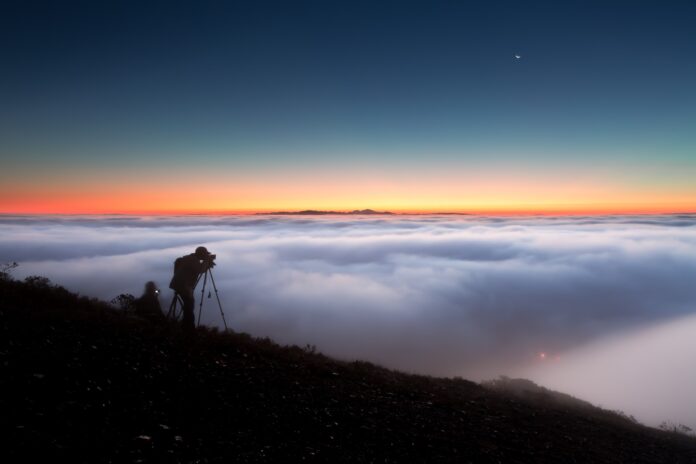Camera bag causing you back pain? You’re not alone.
A week spent toting a camera and heavy lens around Tokyo with a messenger style camera bag a couple years ago nearly crippled me. This incident finally convinced me to take my back health seriously and prioritize utility over fashion. If you’re feeling back pain from your camera bag, I’m here to help. But first, you’re going to have to put down that trendy messenger camera bag.
Messenger and tote style bags are popular, and have their uses, but they’re generally terrible at distributing weight. The straps create pressure points and cause an imbalance of weight on your spine. As you might have already experienced, this can wreak havoc on your back. So what’s the solution?
If it’s practical for your uses, consider switching out your DSLR for a mirrorless camera with a small prime lens that’s light and easy to carry on long days of exploring. A super light camera will be comfortable to carry in nearly any bag, making it easier to stick with the bag of your choice.
Since we know a smaller camera isn’t always in the cards, here’s the best camera bags to prevent back pain.
1Billingham Rucksack
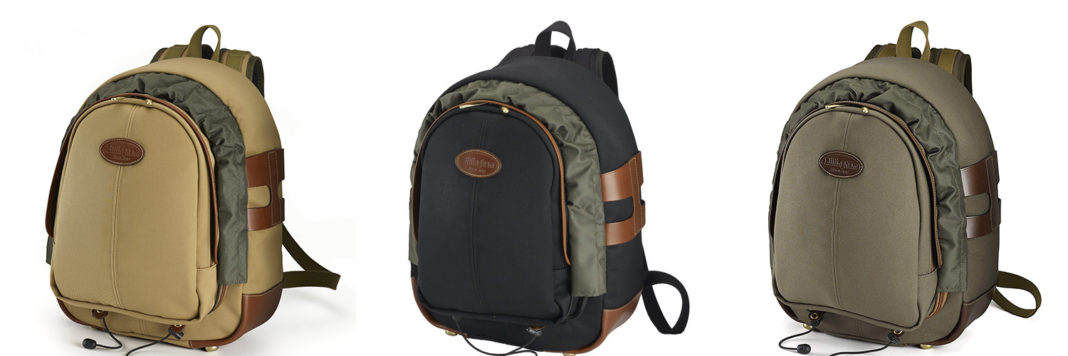
English brand Billingham’s camera bags are famous for their quality and style, and their Rucksack 25 is no exception. This durable pack features adjustable compartments with thick padding all around, great organization for small accessories, waterproof canvas construction, and of course padded and adjustable ergonomic straps.
Capacity: 1 DSLR camera body, along with 2-4 lenses, and small accessories.
You’ll notice that the list is almost entirely backpacks. Even if you’re not a backpack fan, you should give backpack camera bags a chance. They’re much easier on your back, and there’s some legitimately attractive camera backpacks out there.
2Ona Clifton Camera Backpack
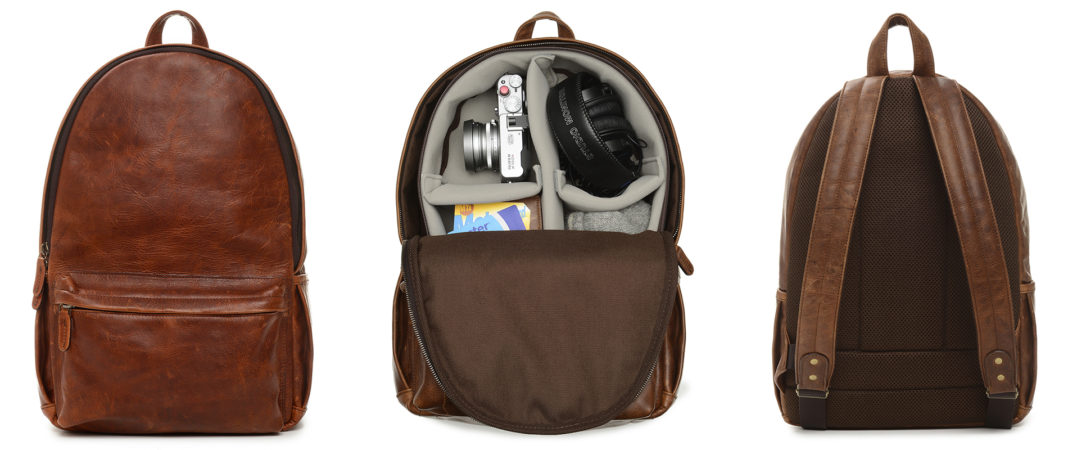
Ona has become a big name in fashionable camera bags, and has done much to popularize those trendy but oftentimes painful messenger camera bags. But they also make a couple handsome camera backpacks. The Ona Clifton backpack comes in an all leather model, as well as a couple waxed canvas and leather versions. It stores a ton of camera gear and features a padded mesh back and padded adjustable straps.
Capacity: 1 camera and 4-6 additional lenses, and small accessories.
3 Ona Monterey Camera Backpack
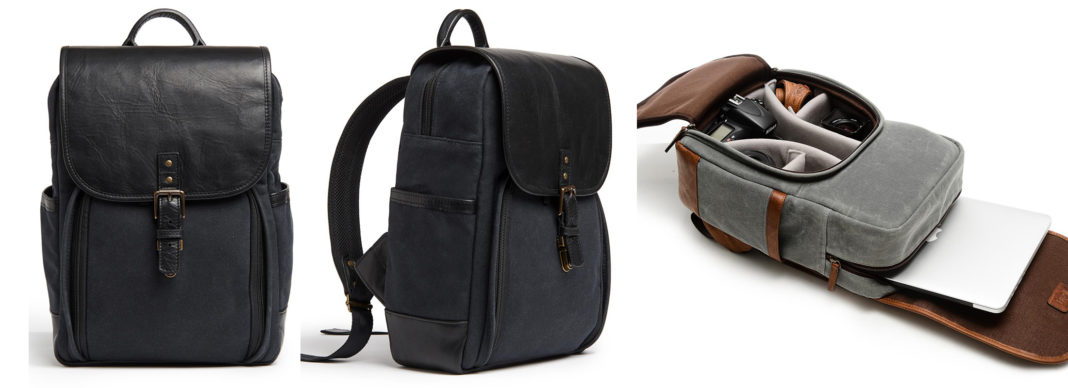
Ona’s Monterey backpack is a smaller, more compact camera bag that still packs in plenty of functionality. It comes in a variety of waxed canvas and leather color combos, and the adjustable padded straps and mesh padded back make for comfy carrying.
Capacity: 1 DSLR camera and up to 5 lenses in the adjustable main compartment, 1 12” – 13” laptop, and small accessories. (The design of this bag is such that while it’s smaller than the Hudson bag above, nearly all the interior space is padded and devoted to holding camera gear).
4 Lowepro Tahoe BP 150 Lightweight Camera Backpack

Lowepro’s Tahoe BP 150 camera backpack is a nice compact bag with features that we love. The full zip front allows for easy access to gear without having to dig, while the side clips prevent accidental opening of this compartment. There’s also ample organization for small accessories.
Capacity: 1 DSLR with lens attached, flash plus extra lens (up to 50mm), accessories and 10″ tablet. The Tahoe BP 150 can also fit the DJI Mavic Pro or the DJI Spark.
5Lowero ProTactic Camera Backpack
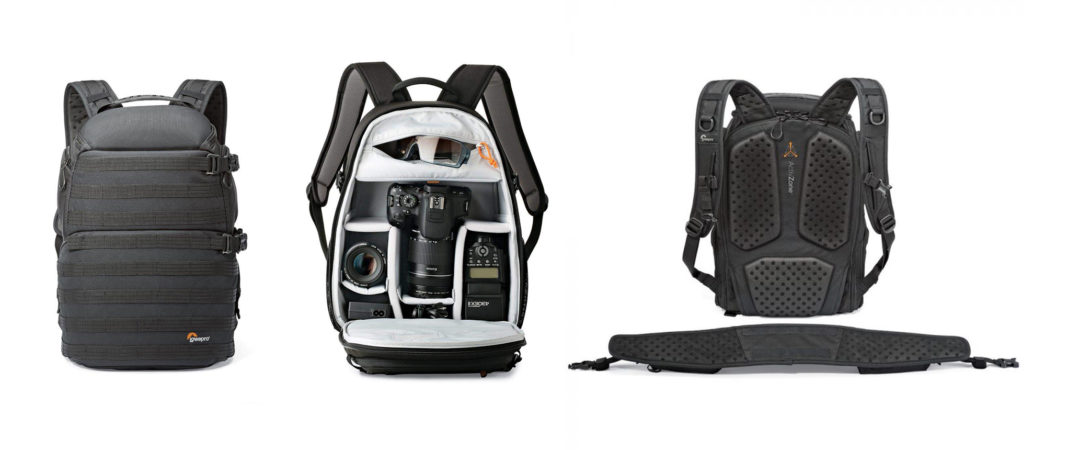
Lowepros ProTactic camera backpack holds plenty and is serious about comfort. Their “ActivZone System” technology provides targeted support at shoulder blades, and lumbar areas, with an optional waist strap for extra support.
Capacity: 1-2 Pro DSLRs, one with up to 70-200mm f/2.8 lens attached, 8 lenses/speed lights, 15″ laptop, tripod and accessories. The ProTactic 450 AW also fits the DJI Mavic Pro drone.
6Incase Designs DSLR Sling Pack
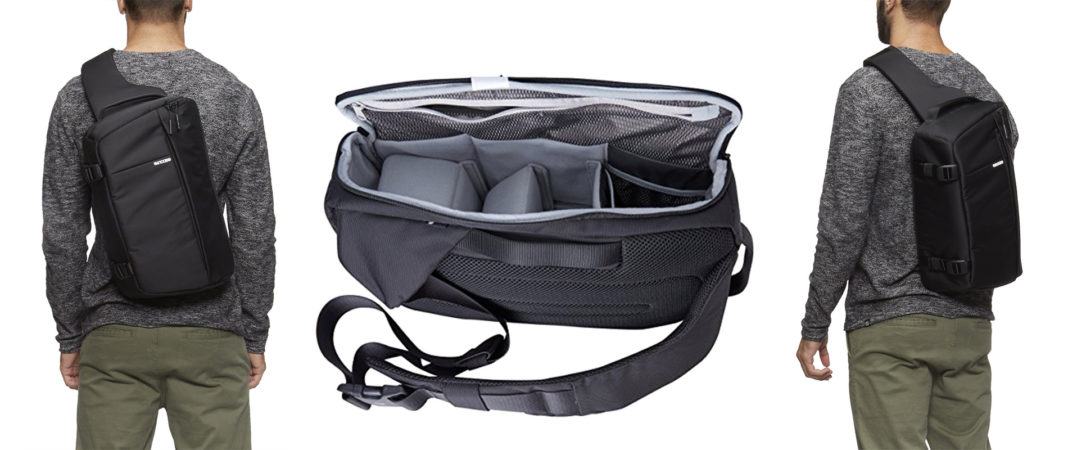
Well designed sling bags can be easier on the back than messenger bags. To prevent back pain, look for one with a wide, padded strap like Incase Designs’ DSLR Sling Pack. We like this bag in particular because it allows for easy access without taking the bag off–just swing it around and unzip. Depending on the type of back pain you’re experiencing, a bag that minimizes the amount of bending and twisting you do may be a big help.
Capacity: 1 DSLR camera body with 1-2 lenses, and small accessories.
7Lowepro Slingshot Edge 250 AW

Another great sling bag, Lowepro’s Slingshot Edge 250 features a wide padded strap, body side access that helps to deter theft, tripod straps, and plenty of padding and organization for all your gear and accessories. It packs a lot of storage into a compact bag, and I love that it’s comfortable to carry even for shorter people.
Capacity: Compact DSLR with attached lens (such as Canon Rebel T6i with 18-200mm f/3.5-5.6), 1-2 additional lenses, and small accessories. The Slingshot Edge 250 AW also fits the DJI Mavic Pro drone.
8Think Tank Photo Streetwalker Rolling Backpack V2.0
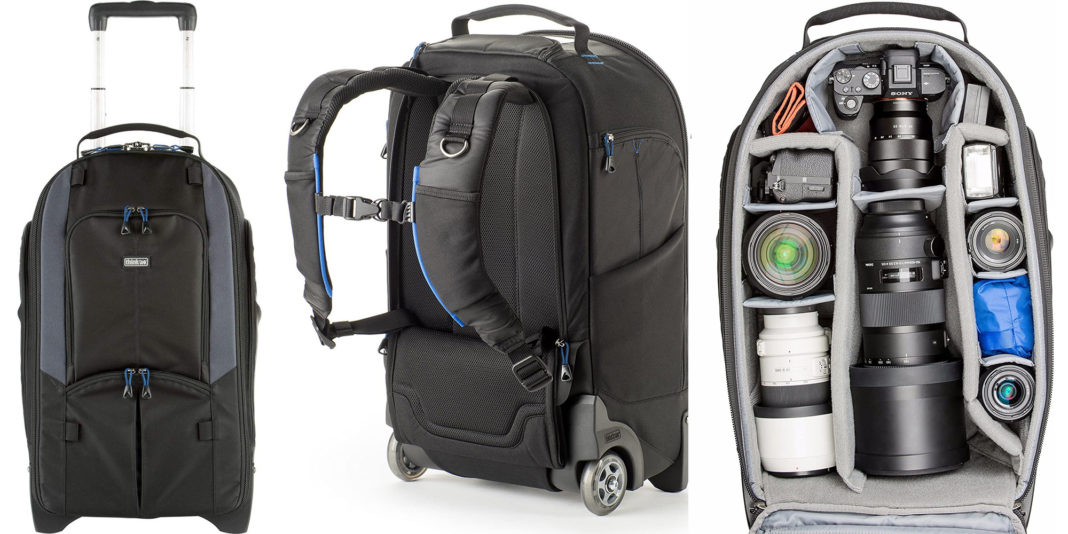
If wearing a backpack is still too much for your back, think about getting a rolling bag. Think Tank Photo’s rolling backpack is a versatile option, and makes a great carry-on for air travel as well.
Capacity: 1 gripped DSLR, 1 standard DSLR, 5–7 standard zoom lenses and a 15” laptop; or Fits 1 gripped DSLR, 5–7 standard zoom lenses, a flash, and a 15” laptop.
Tips for Choosing a Camera Bag When You Have Back Pain
Choosing the right camera bag when you suffer from back pain is essential to maintain comfort and prevent exacerbation of your condition. The primary consideration should be the weight distribution of the bag. Opt for a design that distributes weight evenly across your body. Backpack-style camera bags with wide, padded shoulder straps and a supportive waist belt are ideal, as they distribute the weight evenly across the shoulders and hips, reducing strain on any one area of the back. Additionally, look for bags with adjustable straps to ensure a snug, personalized fit, which is crucial for maintaining proper posture and balance. It’s also wise to select a bag with a padded back panel, as this provides extra support and cushioning against your back, further easing discomfort.
Another key factor is the size and organization of the camera bag. It’s important to choose a bag that’s large enough to accommodate your equipment but not so large that it becomes cumbersome or encourages overloading. A bag with multiple compartments and adjustable dividers is advantageous, as it allows for organized storage of camera gear, reducing the need to search through the bag and potentially strain your back. Look for lightweight materials to minimize the overall weight of the bag. Additionally, consider bags with easy-access pockets for frequently used items to avoid unnecessary bending or twisting. Lastly, if you often carry heavy gear, consider a bag with a built-in or detachable rolling mechanism, which can significantly reduce back strain during longer walks or travel.
FAQs
Messenger and over the shoulder style camera bags are generally terrible at distributing weight. The single straps create pressure points on your shoulders and cause an imbalance of weight on your spine. As you might have already experienced, this can wreak havoc on your back.
Backpacks are generally healthier for your back because they distribute weight better. Two straps (plus occasionally a waist strap) help spread the pressure of all your camera gear equally over both shoulders, preventing pinching, pressure points, and spine misalignment that can occur over time.
Depending on your level of fitness, we can’t promise no pain. You may still have an achy back at the end of a full day of hiking with a camera backpack, but they’re one of the best options to prevent back pain.
If you’re photographing in an urban environment with paved surfaces, a rolling camera bag is also an excellent option.
If you’re experiencing consistent pain that persists even after giving your back a break, simply switching camera bags may not be enough. Don’t just try to work through the pain! See a doctor or a chiropractor to check for deeper issues. Some back issues may require physical therapy and an extended amount of time to recuperate. In the meantime, a rolling camera bag may be the most comfortable choice for you.
Sources:
Peta Pixel – Camera Bags Could Be Damaging Your Body
Popular Photography – Photography is killing you: Health tips for photographers
F-stoppers – Avoid Photography-Related Injury With This One Simple Tip

